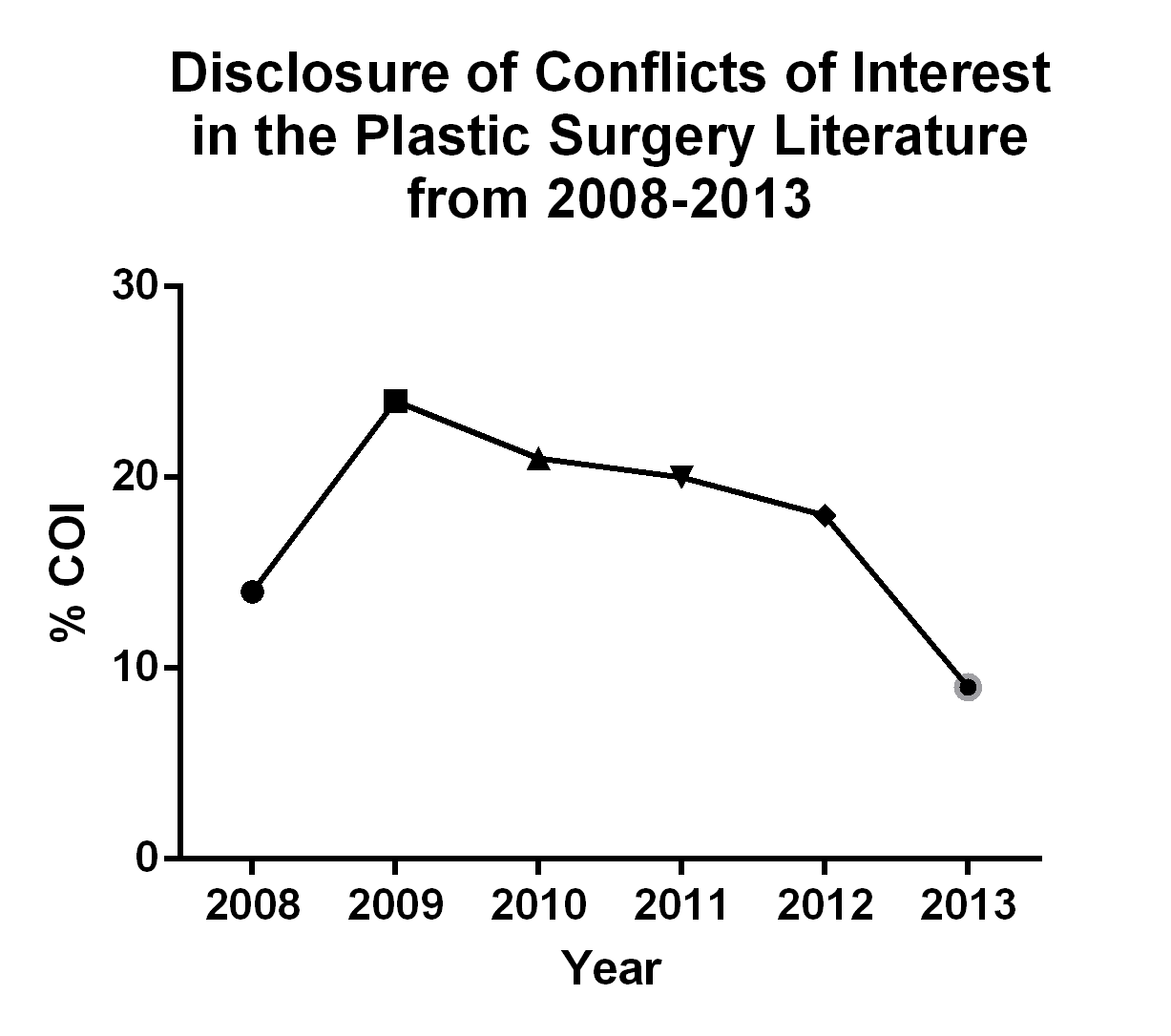|
|
|
|
|
Back to 2016 Annual Meeting
Surgeon Reported Financial Conflicts of Interest in the Plastic Surgery literature from 2008 to 2013...Is It Increasing?
Joseph Lopez, MD MBA1, Amy Quan, MPH1, Nicholas Calotta, BS1, Ilona Juan, BS1, Angela Park, BS1, James W. May, Jr., MD2, Anthony P. Tufaro, MD DDS1, Amir H. Dorafshar, MBBS1.
1Johns Hopkins Hospital, Baltimore, MD, USA, 2Massachusetts General Hospital, Boston, MA, USA.
BACKGROUND: Industry support of plastic surgery research has recently generated substantial attention and controversy. The purpose of this study was to: a) identify trends in industry sponsorship of plastic surgery research since the establishment of conflicts of interest (COI) reporting policies; and b) to evaluate whether the nature of funding has changed over the same period. Our hypothesis was that, from 2008 to 2013, the role of biomedical industry support in plastic surgery research increased, as documented by self-disclosure statements in research articles.
METHODS: We analyzed the frequency and types of self-reported COI in three major plastic surgery journals since the adoption of reporting policies in 2007. All original articles that met our inclusion criteria and were published in the following three journals from 2008 to 2014 were included: Annals of Plastic Surgery, Plastic & Reconstructive Surgery, and Journal of Plastic, Reconstructive, & Aesthetic Surgery. The type of self-reported COI was characterized into the following categories: research or institutional support, royalties/stock options, consultant/employee, or miscellaneous funding. A multivariate regression analysis was performed to determine what study-specific variables increase the likelihood of COI being disclosed.
RESULTS: A total of 3722 articles met the inclusion criteria and were included in the analysis. The incidence of COI increased from 14% in 2008 to 24% in 2009. However, thereafter, the incidence of COI steadily decreased from 21% in 2010 to 9% in 2013. The types of COI also significantly changed from 2008 to 2013 (p < 0.001). In 2008, 71% and 17% of COI were categorized as research support and consultant/employee, respectively. However by 2013, 34% and 57% were categorized as research support and consultant/employee, respectively. A multivariate regression analysis revealed that after adjusting for potential confounders, each increasing year from 2008 was associated with a significant decrease in disclosures of COI (p = 0.03). Additionally, articles with lower level of evidence (p < 0.001) and published in the topic areas of hand surgery (p = 0.002) and general reconstructive surgery (p = 0.001) were significantly less likely to disclose COI.
CONCLUSIONS:
Our findings suggest that since the introduction of COI-reporting policies in the plastic surgery literature, many changes to the biomedical-academic research landscape have occurred. If self-reporting of COI are assumed to be accurate, the number of surgeon-reported COI in plastic surgery declined overall. Our analysis also suggests that industry has steadily increased the number of consultancies rather than direct research support over this period. 
Back to 2016 Annual Meeting
|
|
